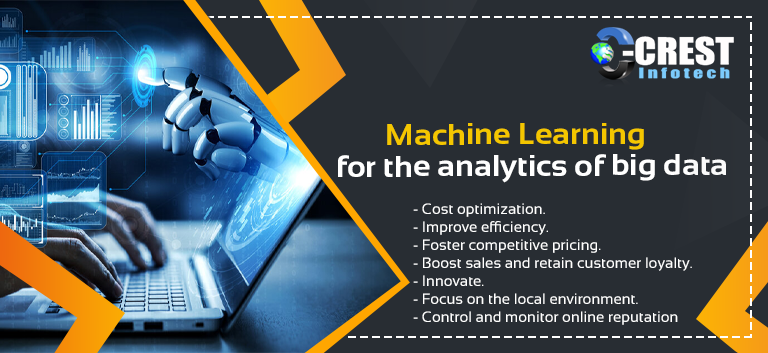Machine learning is an advanced analysis of data that allows the creation of automated analytical models. Algorithms of machine learning continually analyse and maintain ‘learning’ from available data. It’s more about empowering and giving a goal to a system with some tools. In order to meet the final goal, this machine now goes through a series of permutations and combinations with all the data in hand. In the meantime, the best possible strategy to accomplish the specific goal begins to be learned and adapted. No external codes are written in this case. Via real-time data processing, the machine learns.
The function of computer coders is halved by machine learning. Imagine if it had been a manual method where codes had to be entered for a machine to interpret and predict results from large data sets, the sequence of codes a coder would have had to write.
Machine learning is one of the most effective ways of handling information, predicting results, and being on time.
Benefits of machine learning in analytics of big data
- A main aspect of successful UX design is reducing the number of steps for the consumer.
The main goal is to increase website or app conversions and interactions. This should be evident when purchasing a product, booking a ticket, or sorting complicated data in a database.
- Real-time prediction of data for research analysts
Machine learning is seen by big data researchers as the most powerful source for accurate data prediction. It absorbs a large amount of data, thoroughly goes over all the relevant patterns and events, and eventually provides real-time data with concise and reliable forecasts. This detailed nature of data allows analysts to dig deeper into their analysis, better understand knowledge, and use it for the development of multiple industries. One way to clarify it is: at various time slots, machine learning will precisely target new supermarket deals for departmental customers. This suggests that what clients see at 3 PM is different from what they saw at 1 PM.
Benefits of machine learning in analytics of big data
Big data analysts are employed by most organisations to drive their sales game. Big data analysts, in turn, rely on machine learning for them to do this job. To classify those clients who will leave, machine learning uses churn analysis. It brings client leads, conversions, and income rates into play, purchasing habits, and spending history. It uses the same technology to go against rival brands over consumer defections.
How does a data analyst benefit from this?
Analysis of churn helps to find the loopholes that may have pushed possible leads away. The possible leads that will opt out soon are identified by machine learning. Analysts will dig deeper using this knowledge to clarify “why” and “what can be done.” Analysts should strategize their clients on the basis of priority and use their tools to communicate with them by evaluating purchasing habits, revenue history, etc. Data analysis dealing with consumer defections can help analysts keep a retention strategy handy so that the situation is under control well before the mess begins.
“In big data analysis, machine learning has numerous advantages, the main one being its ability to learn on its own, analyse data sets and provide accurate insights that are valuable to analysts. It is proactive and is designed primarily for industries that use the formula of “actions and reactions. It is easier for systems to pick up behaviour based on machine learning predictions. Machine learning is a blessing for every organisation or industry because these forecasts are immensely accurate. Based on actual facts and industry-specific forecasts, it is the secret to propelling business.
You can also Hire Dedicated Developer and Hire Dedicated Designers. Contact Crest Infotech to know more about Dedicated Development and Designing services in Details.
